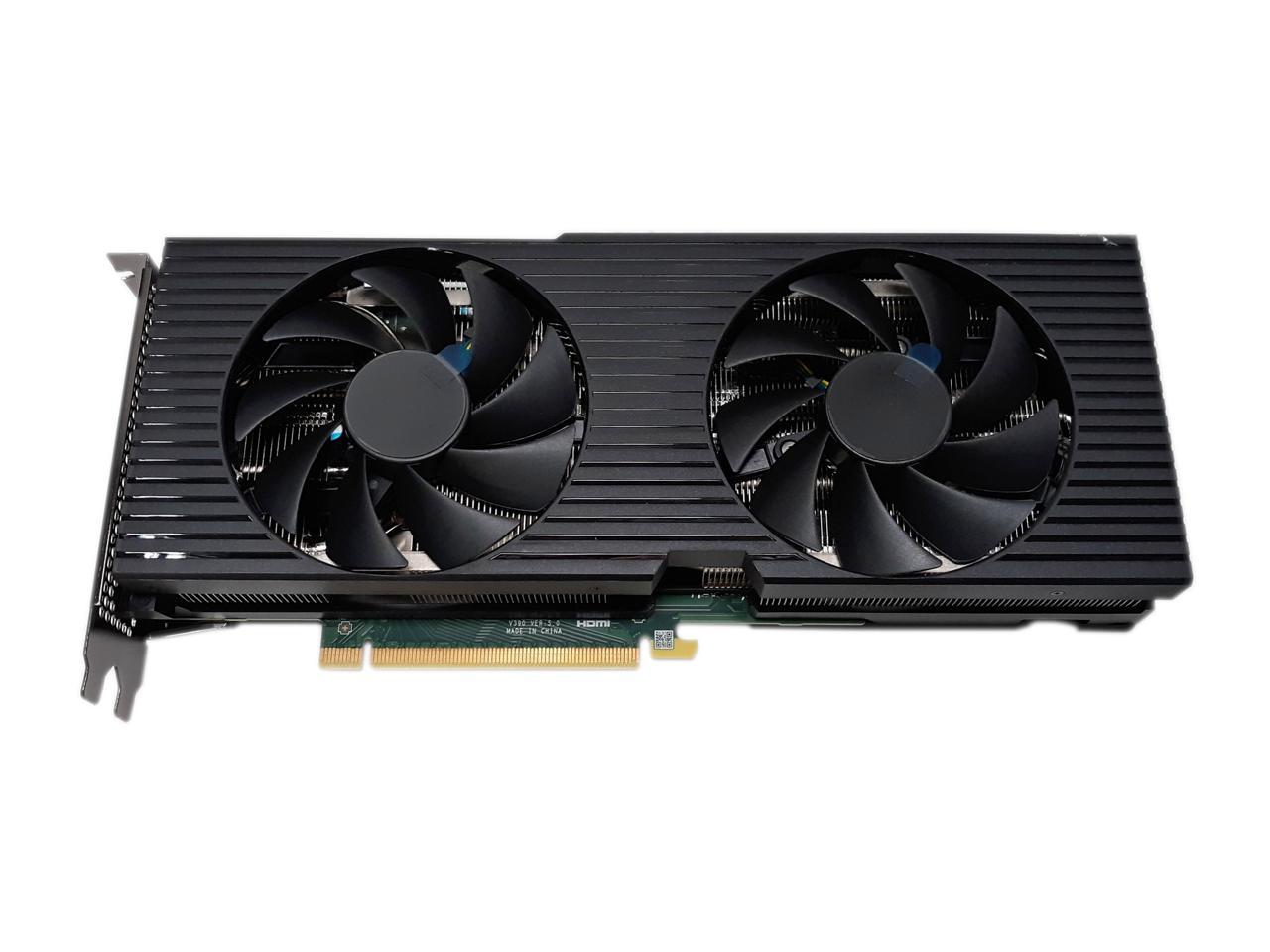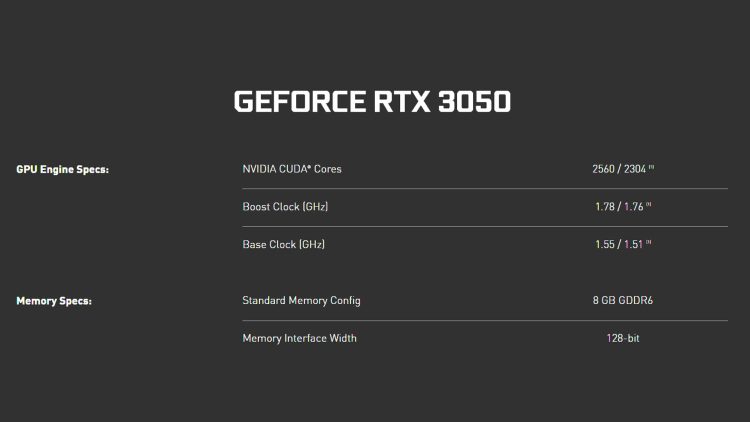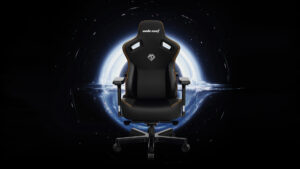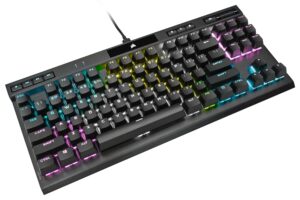The iconic Nvidia RTX GPU branding carries with it a premium conception. RTX means ray tracing, DLSS, and by association, high performance. That’s less so the case when it comes to the specs of the RTX 3050, which make it significantly less powerful than the rest of the Nvidia RTX 30 Series lineup.
This problem is about to become further exacerbated with the OEM-specific GPU variant, which is something consumers need to be aware of, and potentially, watch out for. As of now, there are two distinct versions of the Nvidia RTX 3050 with different specs. This is clearly displayed on Nvidia’s website.
The original specifications should still apply to graphics cards purchased from Add-in Board Partners (commonly referred to as AIBs). Examples of these include EVGA, MSI, ASUS, Gigabyte, ASRock, Zotac, Inno3D, PNY, Yeston, etc. However, you’ll want to watch out for OEM versions from companies like Dell (Alienware), Lenovo (Legion), and HP (Omen) to name the major brands.
An RTX 3050 with an asterisk
The OEM version of the Nvidia RTX 3050 will come with cutdown specs that include fewer CUDA cores, and slightly lower clock speeds. The CUDA core count for the OEM version will be 10% lower, while the Boost Clock will be just 1.2% lower and the Base Clock will be 2.6% lower by Nvidia’s metrics.
To be fair, this may not appear like enough of a difference to raise concerns for you. However, you also want to keep in mind that OC’d versions of the RTX 3050 reach Boost Clocks up to 1.89GHz, so all cards are not created the same and thus don’t offer the same performance.
However, Nvidia and said OEMs could bundle these cards into systems that offer significantly better value than expensive AIB variants. The takeaway here is to either make sure you’re getting a good deal on an RTX 3050-equipped OEM system, or perhaps just upgrade to a greater performance tier with a better price-to-performance ratio.
A few of the best price-to-performance Nvidia graphics cards this generation include the RTX 3060 Ti, the RTX 3070, and the RTX 3080. For AMD, there are the Radeon RX 6600, 6600 XT, the 6750 XT. These cards don’t get too ridiculously pricey, but are worth the extra splash of cash.
You also might hold your breath for the Intel Arc graphics cards, which may offer excellent budget and midrange gaming options, provided the driver issues get smoothed out in time.













